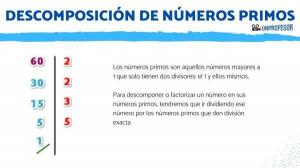History of the PI NUMBER and who discovered it
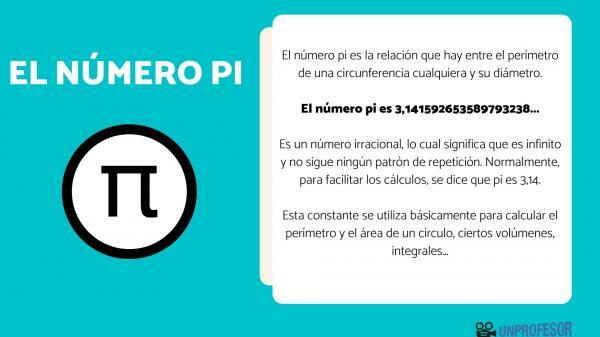
In a Professor we bring you important information if you want to have a general mathematical culture: let's see the history of the number pi and who discovered it. Therefore, we will first see what exactly is the number pi and what we use it for. Next, we will study what their history is and we will briefly analyze who or who discovered and, finally, we will do a little activity to make sure you have understood what explained. Also, at the end of the article you will find a curiosity about the number pi!
Index
- What is and what is the number pi for?
- History of the number pi
- Exercises number pi
- Exercise solution
- Curiosity about the number pi
What is and what is the number pi for?
The PI number is the relationship between the perimeter of any circumference and its diameter. Therefore, it is a constant, since it does not matter whether the circumference is small or large: the division between its perimeter and its diameter is going to be pi.
Specifically, pi is 3,141592653589793238...
It's a irrational number, which means that it is infinite and does not follow any repeating pattern. Normally, for ease of calculations, pi is said to be 3,14.
This constant is basically used to calculate the perimeter and area of a circle, certain volumes, integral... although it has other applications such as putting satellites into orbit or optimizing aviation routes. In fact, we are constantly surrounded by objects or situations that refer to the number pi.
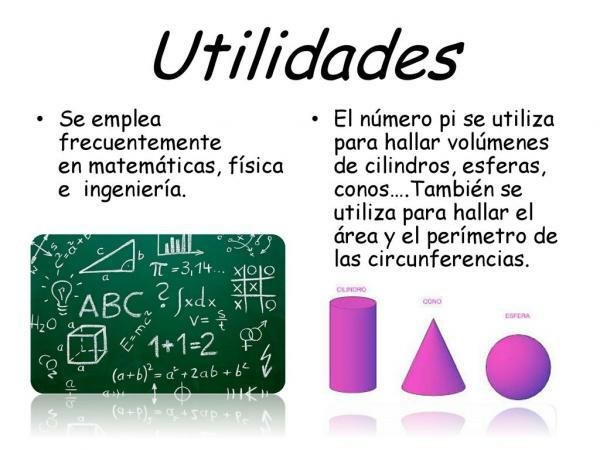
Image: Slideplayer
History of the number pi.
The history of the number pi is divided into three stages, of which we will make a brief explanation:
- Period 1: geometry
- Period 2: infinitesimal calculation
- Period 3: nature of pi
Pfirst period
We find the first signs of interest in the number pi in different ancient papyri (The best known is the Rhind papyrus from 1800 BC. C.), in addition to the sacred books. They were approximations of this number in an empirical way, there was not yet a theoretical vision.
It was Archimedeswho in "On the measurement of the circle" scientifically dealt with the question and arrived at an approximate value of pi of between 3.1408... and 3.1429... As Greek culture went into decline, the Chinese and Hindus tried to perfect this approximation of the number pi of Archimedes, as for example Liu Hui.
Ssecond period
The symbol used was unified by the authors who continued to study this constant. In 1706, W. Jones uses the current symbol for the first time, possibly because it is the initial of the word that in Greek means perimeter. It was in 1737 when the symbol became universal, when Euler used it in his later works in a systematic way.
Tthird period
It is about finding the nature of the number pi. It was Lambert who proved that pi was an irrational number, that is, that it cannot be a solution of an equation of first degree with integer coefficients, since it is an infinite number that does not repeat itself following a pattern any.
The story does not end here, since the continuous development of increasingly powerful computers causes the number pi and its properties to continue to be studied. It tries to speed up the process of calculating those eternal decimals of the number pi in less and less seconds.
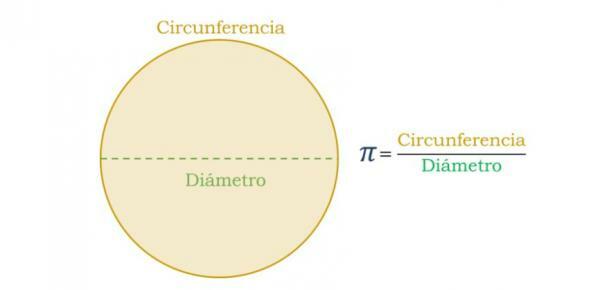
Image: Scientific culture
Exercises number pi.
To finish this lesson on the history of the number pi, we are going to give you exercises that will help you test your knowledge. In the next section you will find the solutions.
- Is the ratio between the perimeter of a circumference of diameter 10 cm and that of a circumference of diameter 20 cm smaller in the first or in the second?
- Can you tell what is the pattern that the decimals of the number pi follow?
Exercise solution.
- The reason is exactly the same in both: the constant pi.
- They do not follow any repeating pattern.
Curiosity about the number pi.
On numerous occasions, different people have tried to overcome the record to recite more decimals of the number pi from memory. As you already know, it could be eternal. Therefore, a poem that will help you to know the decimals of the number pi. The number of letters in each word equals a number of pi.
I am π: slogan and witty reason
of wise man that, precious series
valuing, enunciated masterly.
With my singular law, well measured,
the Great Orb, finally reduced
went to the royal ordinary system.Archimedes in precious sciences
creates π, famous monument,
and although it gave a final valuation,
periphery of the circle knew,
duplicating geometric group
resolve and appreciate you extension.Memorable bequeathed theorem
as rare admirable favor
of splendid immortal science
and broad law, philosophical source
of deep ascending truth
magnitude discovered universal.
If you found this lesson interesting, feel free to browse the search engine or the tabs on our website, where you will find many other math articles.
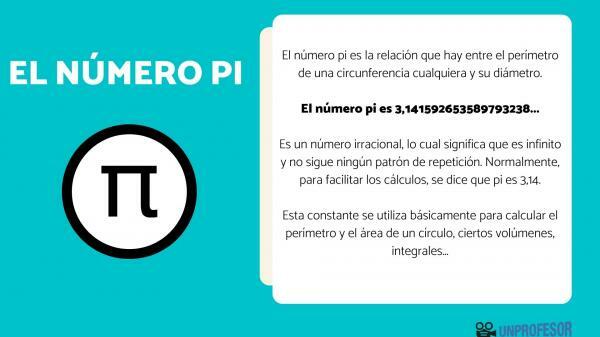
If you want to read more articles similar to History of the number pi and who discovered it, we recommend that you enter our category of Basic concepts.
Bibliography
- Acherman, S. R. (2000). The PI Number and its History. Engineering and Competitiveness, 2 (2), 47-62.

